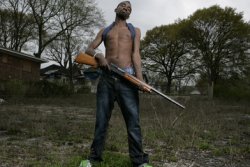

We visited a random safe house pretty much in the middle of nowhere, independently run by a kind old woman who regularly gave away free HIV and hep-C testing, as well as free food and clothes and syringes for anyone who came in. For a place as notoriously dangerous as this one, people’s general tone was positive, and good hearted. “The trick is not being able to leave the ghetto,” he told us, “the trick is coming back.”ĭespite the surrounding damage, everyone seemed in good spirits. As we came along down streets lined with houses that looked like they’d come through a hurricane, boarded over and abandoned, torn to shit or half burnt down, Michael sat at the window looking out and thinking aloud about the strange shift in terrain.

Most seemed to want their neighborhood kept to itself. I remember realizing we were getting near the Bluff when passing a group of men standing on the street shouted, “No pictures!” Most of the people we ran into throughout the afternoon not involved with the film made a point of this: Fuck cameras, and fuck you for aiming one at me. Atlanta is interesting in that cultural and economic divisions can often change from block to block, with hardly any bleed-over between expensive loft apartments and projects. It was hot and there were eight of us packed into a large black SUV, though we didn’t have to drive too long from the expensive midtown hotel where Michael was staying to the hood.


 0 kommentar(er)
0 kommentar(er)
